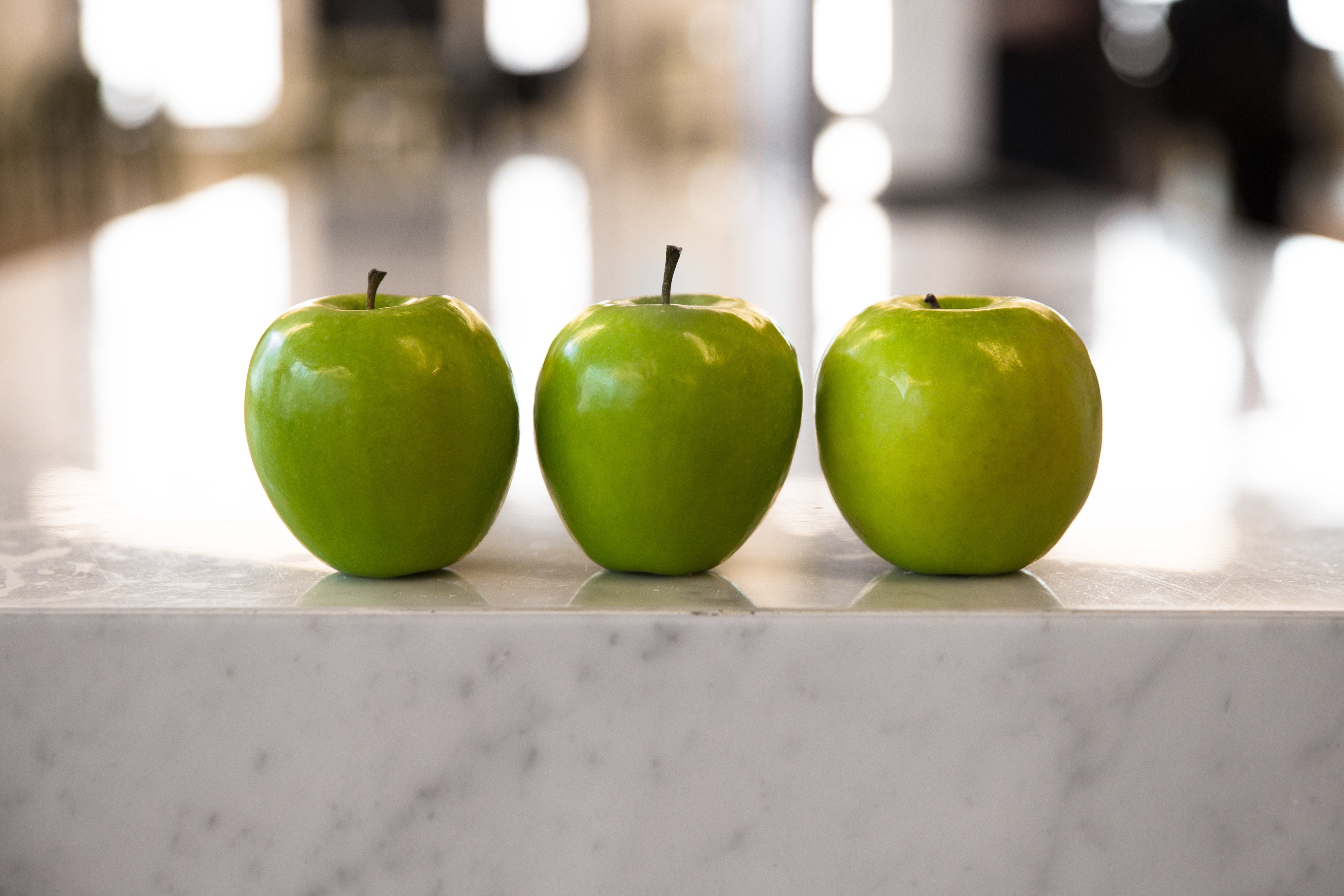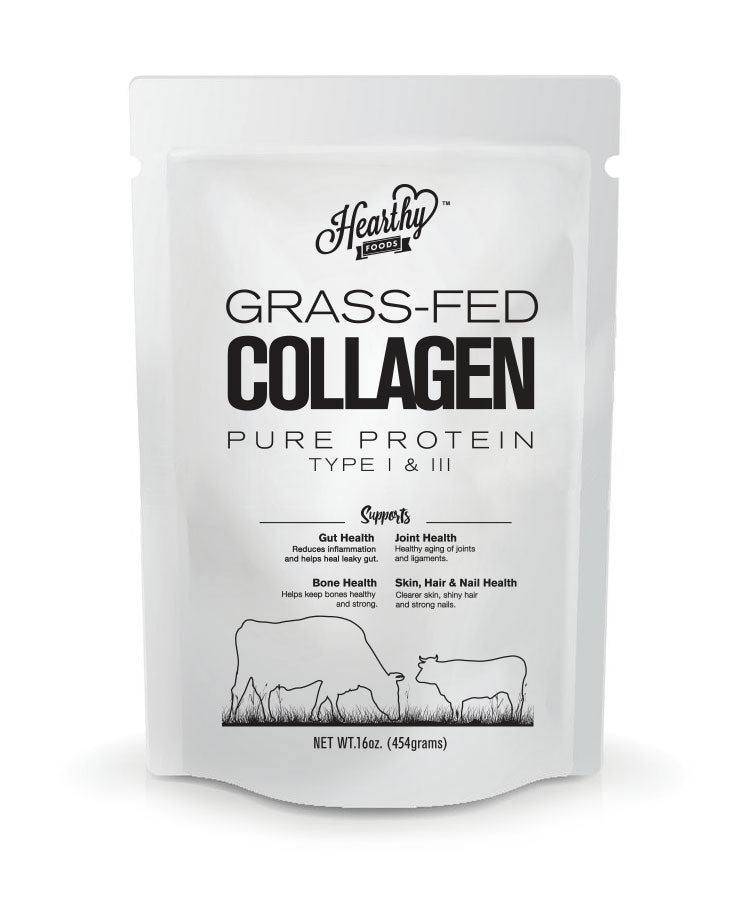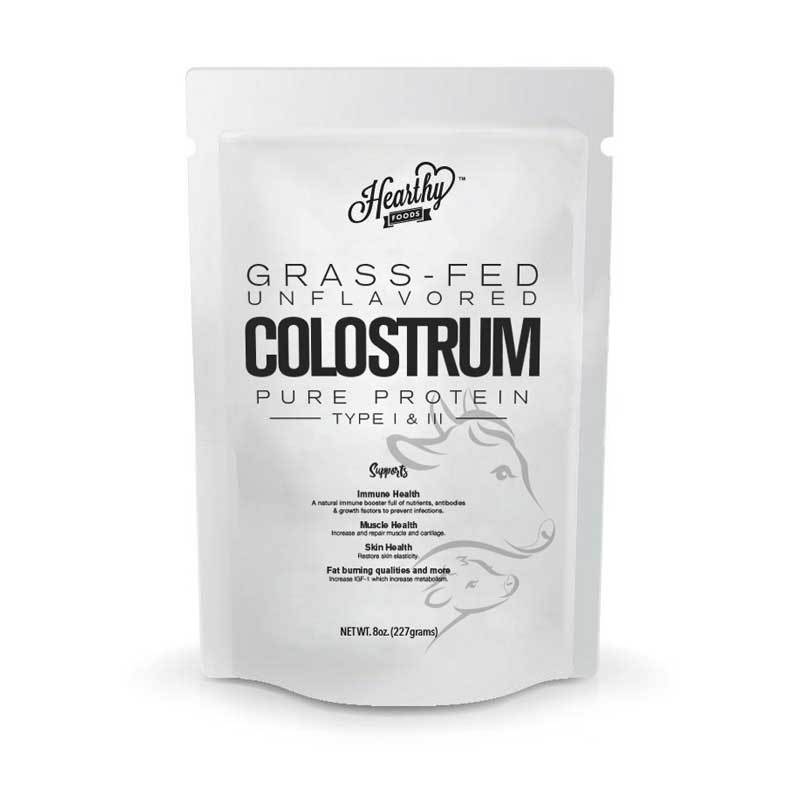News

NOV 19, 2019
Apple Flour is the fiber rich baking staple of the future
The wellness world is once again spinning the wheel on alternative flours. And guess what we’re grinding down this time? Okay, okay, I’ll tell you: dehydrated apples.A November study published in the MDPI journal Foods looked into cookies fortified with apple pomace flour. Pomace is the byproduct of juicing made from pulp, seeds, seed cores, and stems. Usually, these leftovers get tossed, but apple flour transforms them into an alt-flour that has (wait for it) up to quadruple the amount of gut-healthy fiber as white all-purpose flour.“Some brands of apple flour—although not all—offer more than four times the fiber than the amount found in refined white flour,” says Malina Malkani, RDN, a dietitian with the Academy of Nutrition and Dietetics. “This is a significant benefit, given that the Dietary Guidelines for Americans recommend that adults consume between 28 to 34 grams of fiber daily, yet the average American adult only gets about 15 grams according to the National Academy of Medicine.”It’s true. While 1 cup of ordinary white all-purpose flour contains about 3.4 grams of fiber, 1 cup of Hearthy Foods apple flour contains 16 grams of fiber. And all that extra fiber is really, really good for your gut. “Fiber supports digestive and bowel health helps improve cholesterol levels, helps stabilize and control blood sugar levels, supports optimal body weight, and helps you feel fuller for longer, which can reduce the urge to overeat,” she says.Apple flour can often be gluten-free. Just watch out for brands adding wheat flour or other gluten-rich alternatives that change the consistency of the baking staple.Even if you eat gluten, however, the fortified flour is worth adding to your pantry. “Due to the increasing incidence of various metabolic disorders, obesity, and gluten intolerance, there is an interest in developing fortified products with a high content of dietary fiber and antioxidants,” write the study authors.I won’t go on to write a lousy riff on that old “An apple a day…” adage. But hey, if you’re always on the search for ways to squeeze more fiber into your diet, apple-inspired baked goods might be an excellent place to start. Published Wells + Goods. Article written by Kells McPhillips
READ MORE
OCT 28, 2019
Hearthy Collagen is the leader in the Halal Collagen Market.
Hearthy Foods is the pioneer of halal collagen. Hearthy Collagen is the leading seller of premium halal collagen. Hearthy Collagen is excellent at instantly dissolving and has an invisible taste that leaves your drink or food to remain unflavored. The oral consumption of Hearthy Collagen may provide numerous health benefits. Health Benefits Dosage Effects Studies Beauty 5-10 g/day 3 months Increase hydration, firmness, and elasticity of the skin In vitro and in vivo studies Joints 10 g/day, 4 to 6 months Help to maintain the structure and functionality of joints In vitro and in vivo studies Bone Health 5-10 g/day, 6 to 12 months Support bone mineral density and strengthens the bone In vitro and in vivo studies Satiety 15 g/day Reduce the calorie intake in subsequent meals In vivo study Hearthy Collagen Features: Pure Protein High digestible All-natural (clean label) Free from sugar, fat, cholesterol, carbohydrates Free additives and preservatives Free from artificial colors, flavors, and sweeteners Gluten-free Non-GMO GRAS Hearthy Collagen has Type I and Type III. Type I is the most common collagen found in the connective tissue (skin, bones, and tendons). Type III collagen is present in your skin. It reduces as we age. Young person skin man contains up to 50% of type III collagen, but as we age this reduces to 5-10%. Hearthy Collagen is halal bovine sourced collagen. Did you know? Collagen is the most abundant protein in the human body. It accounts for 30% of the body's protein. More than twenty different types of collagen have been identified as the key building blocks that provide support and structure to our bodies. Collagen is present in all connective tissues such as skin, bones, cartilage, tendons, ligaments, and blood vessels. Collagen plays a crucial role in supporting and connecting everything together. Collagen is the building block of our body. Collagen peptides, which are also known as collagen hydrolysate or hydrolyzed collagen, are a type of highly digestible protein. A significant number of clinical studies show the benefit of collagen peptides in relation to the skin, bones, and joints, weight management and sports nutrition.
READ MORE
MAY 02, 2019
Hearthy Foods expands into Fresh Thyme
Hearthy Flours are available in Fresh Thyme. Each container comes with a recipe card. Look for the cup in the flour aisle. Hearthy flours are the next generation of flours. This is more than a grocery store. This is a celebration of all things fresh, natural, organic and amazing!”
READ MORE
MAR 30, 2019
The Benefits of Cololstrum
Colostrum is the first form of milk from mammals and human beings. It is a superfood for the immune system, especially in a growing infant. Lowers inflammation Athletic performance recovery Chronic Steroid use Mysterious GI symptoms Allergies Recommendation: ¼ teaspoon colostrum/water – you can start to increase up to the point where you can consume 1 teaspoon/day. Hearthy Foods colostrum is grass. Grass-fed colostrum is the highest quality colostrum. Please watch the benefits of colostrumvideo by Dr. Berg. https://youtu.be/4a5V4Bx3qss Dr. Eric Berg DC Bio: Dr. Berg, 53 years of age is a chiropractor who specializes in Healthy Ketosis & Intermittent Fasting. He is the author of The New Body Type Guide and other books published by KB Publishing. He has taught students nutrition as an adjunct professor at Howard University. He no longer practices but focuses on health education through social media.
READ MORE
NOV 28, 2018
The Benefits of Baobab Flour by Megan Ware RDN LD
Baobab is a tree that grows in Africa, Australia, and the Middle East. Every part of the tree has traditionally been used as food, as medicine, or as the basis of clothing or household items. Baobab fruit is edible, and baobab seed powder is used in foods because of its nutrients, possible health benefits, and as a natural preservative. It is a good source of vitamin C, potassium, carbohydrates, and phosphorus. The fruit is found inside hard pods that hang upside down from the tree. It has a citrus flavor. Baobab is "wild-harvested." It is taken from its natural environment and dried naturally. The seeds are removed and ground into a powder that can be added to food products. This article looks at the nutritional content of baobab, the possible health benefits, how to incorporate baobab into the diet, and possible health risks. Fast facts on baobab The baobab tree grows in Australia, the Middle East, and parts of Africa. The baobab fruit and powder are rich in vitamin C and believed to have antimicrobial, antiviral, anti-oxidant, and anti-inflammatory properties. Baobab powder and other products can be incorporated into smoothies and salads. More research is needed to confirm the health benefits of baobab. Benefits Baobab products are believed to have medicinal benefits. Traditionally, baobab leaves, bark, and seeds have been used to treat "almost any disease," including malaria, tuberculosis, fever, microbial infections, diarrhea, anemia, toothache, and dysentery. The leaves and fruit pulp have been used to reduce fever and stimulate the immune system. The health benefits of baobab are said to include: improving digestive health supporting the immune system general hydration and skin health It is reported to have antimicrobial, anti-inflammatory, antimalarial, antidiarrheal, antiviral, and antioxidant properties, and to be useful in treating or preventing anemia and asthma. However, there is very little research on the consumption and effects of baobab. Gastrointestinal health A study conducted by Oxford Brookes University found that polyphenol-rich baobab fruit extract, baked in bread, reduced starch digestion and glycemic response in humans. Baobab has traditionally been used in African populations to relieve diarrhea, constipation, and dysentery. The soluble fibers found in baobab fruit may exert prebiotic effects, promoting the growth of healthy bacteria in the gut. Nutrition The pulp of the baobab fruit contains: vitamin C calcium phosphorus carbohydrates fiber potassium protein lipids The pulp can be used to add flavor to dishes and in juices. The seeds contain: phosphorus magnesium zinc sodium iron manganese lysine thiamine calcium A teaspoon of baobab powder, weighing around 4.4 grams, contains: 10 calories 3 g of carbohydrate, of which 1 g is sugar 2 g of fiber 136.4 milligrams (mg) of vitamin C 0.352 mg of thiamin 0.227 mg of vitamin B6 10 mg of calcium According to a study published in Critical Reviews in Food Science and Nutrition, baobab pulp is rich in vitamin C, with 40 g providing from 84 percent to more than 100 percent of the Recommended Daily Intake (RDI). The vitamin C level is said to be 10 times that of oranges. Baobab leaves are also rich in calcium. The seeds and kernels of baobab fruit have a high-fat content while the pulp and leaves have antioxidant properties. One promoter of baobab products claims it has 10 times the fiber of apples, six times the vitamin C of oranges, two times the antioxidants of acai berries, two times the calcium of milk, four times the potassium of bananas, and five times the magnesium of avocados. Researchers have suggested that, while baobab food products contain valuable nutrients, more information is needed about their bioavailability and digestibility. Dietary tips In the regions where it grows, baobab is a staple food. In central Africa, the leaves are harvested and dried. They can be used in a similar way to spinach, or used as the basis of a sauce for adding to gruels, rice, and porridge. Baobab fruit and powder can be used for various culinary purposes. The fruit pulp can be dissolved in water or milk and used as a drink, a sauce for food, as a fermenting agent in brewing, or in baking, similar to cream of tartar. Baobab is most commonly available as a powder in regions where the fruit is not grown. It is hard to find fresh baobab fruit outside the regions where it grows. Baobab powder may be used in bodybuilding and fitness supplements as well as in vitamins and mineral formulas. It can also be incorporated into smoothies, fruit juices, cereals, granola bars, yogurts and dairy products. Baobab fruit powder typically has a shelf life of 24 months, but researchers have called for more investigation into how storage and processing affects the nutrients. Risks Baobab fruit was certified as "generally recognized as safe (GRAS)" by the U.S. Food and Drug Administration (FDA) in 2009. However, it has not been studied extensively. Further studies are needed to support any health claims. As with any "newly discovered" food, there could be health risks associated with it that have yet to be reported.
READ MORE
AUG 28, 2018
Hearthy Foods was on the Food Network
These Alternative Flours Are Popping Up Everywhere Let the plant-based baking begin! "Remember when your only options for flour were white and whole wheat? In the wake of the gluten-free craze, alternative flours like almond, oat and rice emerged, offering Celiac suffers options for baking, thickening and breading. With the ever-increasing demand for plant-based foods, the next generation of flours is completely grain-free. Flours made from fruits and vegetables are popping up online and on store shelves, and the wellness community can't get enough of them. Most are made from dried and ground fruits and veggies with little or no additional ingredients." - Dana Angelo White, MS, RD. ATC (she got more degrees than a thermometer). We at Hearthy Foods make all of our flours in-house. We don't get them ship from other countries. Know that the flour that you order was made fresh. Our flours are not tasteless, bland, or burn flour devoid of all nutrients. We dehydrate at lower temperatures to maintain the vital nutrients. We mill it and pack it all right here in Los Angeles, California. https://www.foodnetwork.com/healthyeats/news/2018/8/these-alternative-flours-are-popping-up-everywhere
READ MORE